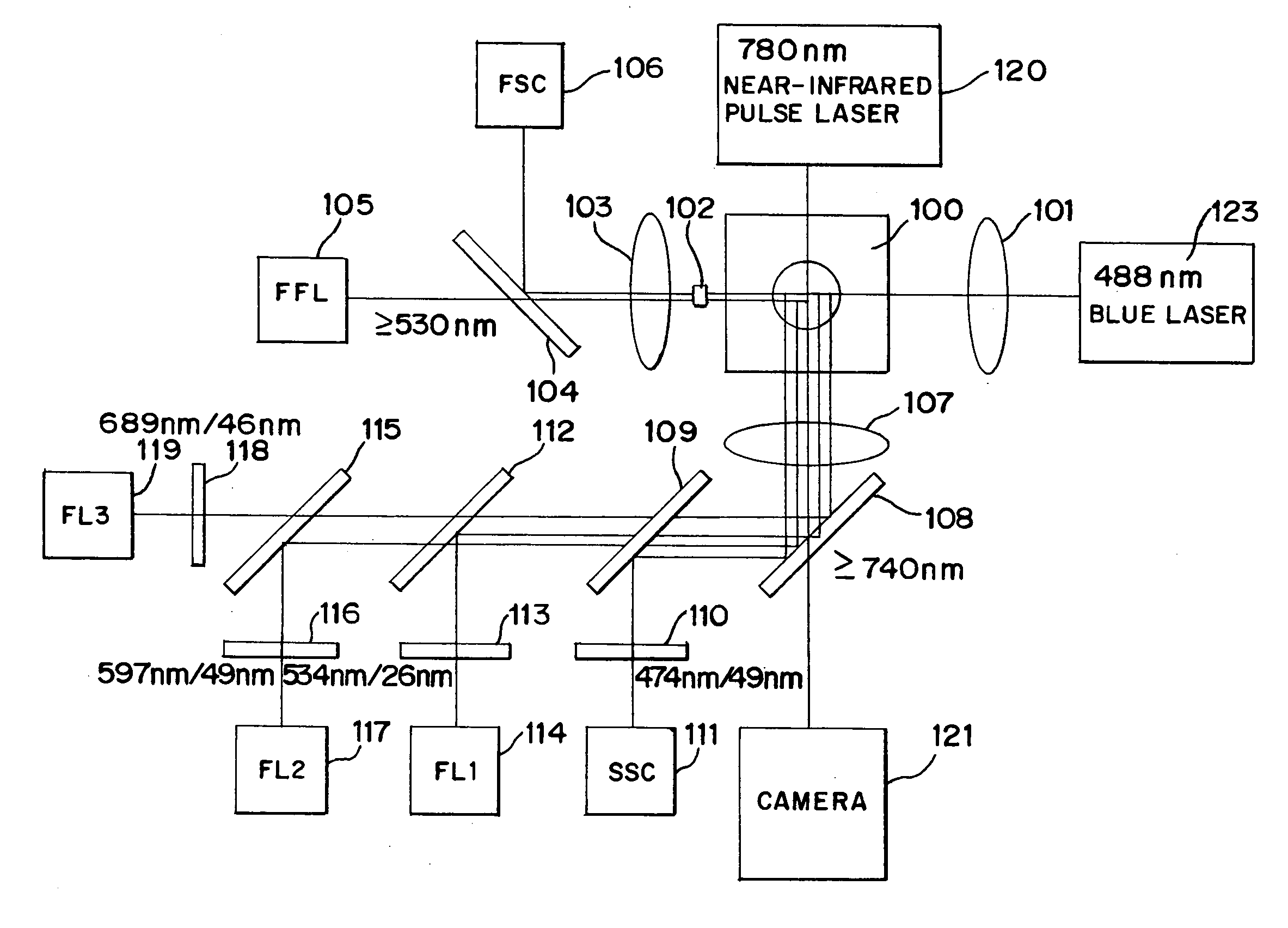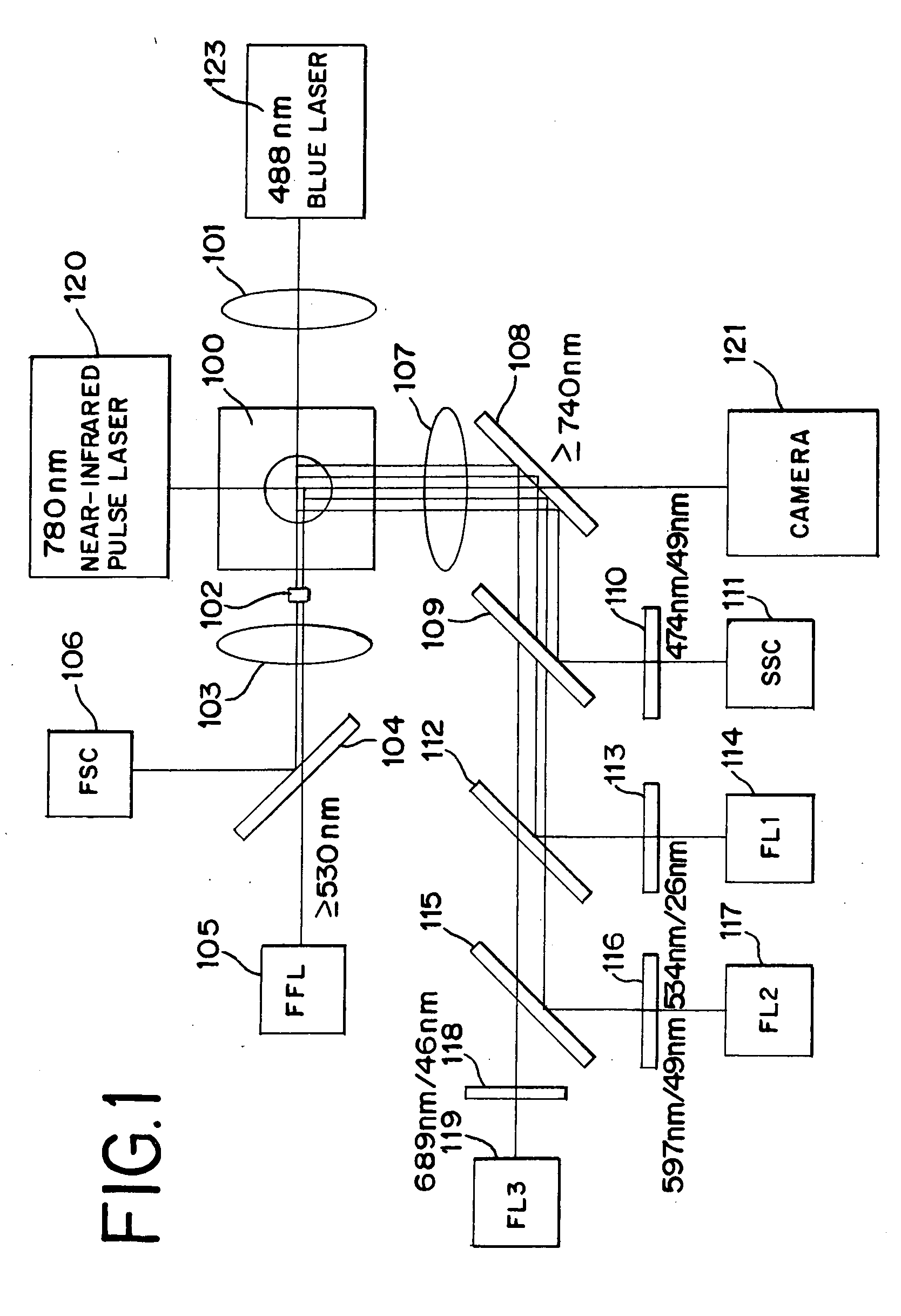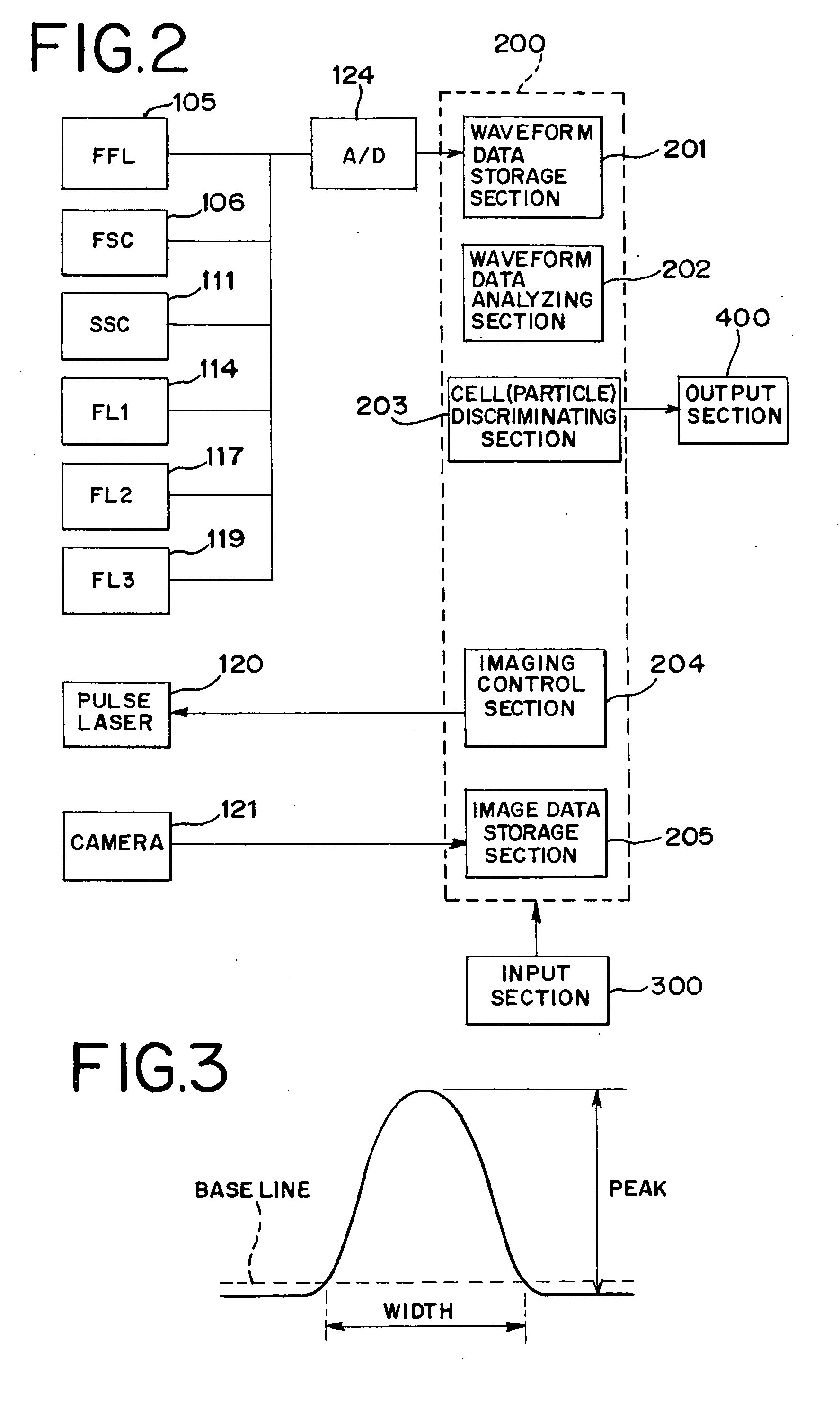Methods of discriminating cancer/atypical cell and particle agglomerate, and cytoanalyzer
- Summary
- Abstract
- Description
- Claims
- Application Information
AI Technical Summary
Benefits of technology
Problems solved by technology
Method used
Image
Examples
example 1
[0096] Cancer / atypical cells are present together with leukocyte agglomerates, normal squamous cells, normal squamous cell agglomerates in a specimen. Therefore, discrimination of singular cells from agglomerates is prerequisite for discrimination of the cancer / atypical cells from the other cells.
[0097] The measurement was simulated by employing artificial particles, i.e., beads, instead of the cells for examination of discriminability according to the present invention.
[0098] According to the process shown in FIG. 11, a measurement sample (1) was first prepared by suspending about 12000 singular beads (latex particles) each having a particle diameter of 9 μm in RET-SHEATH liquid (produced by SYSMEX Corporation), and a measurement sample (2) was prepared by suspending about 12000 singular beads (latex particles) each having a diameter of 5 μm and partly naturally agglomerated in RET-SHEATH liquid (Step S1). Then, the measurement samples were measured by the flow cytometer (Step S2...
example 2
[0105] Next, description will be provided to measurement performed by employing uterine cervix cells as a clinical specimen.
[0106] First, a measurement sample was prepared in the following manner in Step S1 shown in FIG. 11.
[0107] A clinical specimen (about 2×105 cells / tube) preserved in a preservation solution PreservCyt (Cytyc) was subjected to centrifugation at a rotation speed of 10,000 rpm for one minute, and a 10% N-acetyl-L-cysteine PBS solution was added to the resulting pellet. Then, the resulting suspension was subjected to centrifugation again at a rotation speed of 10,000 rpm for one minute. Thus, a pellet free from mucus was provided.
[0108] A Zamboni fixation solution (0.2% 2,4,6-trinitrophenol and 2% paraformaldehyde) was added to the pellet and, after 10-minute reaction, the resulting suspension was subjected to centrifugation at a rotation speed of 10,000 rpm for one minute. Then, supernatant was removed, and a coenzyme reaction liquid (PBS containing 0.2% collage...
example 3
[0117] The values of the ten characteristic parameters were calculated on the basis of the signal waveforms of the forward scattered light obtained in the measurement in Example 2, and the discriminability provided by the respective characteristic parameters for the following were examined:
[0118] (a) discrimination between the atypical cells and the leukocyte agglomerates;
[0119] (b) discrimination between the atypical cells and the squamous cells; and
[0120] (c) discrimination between the atypical cells and the squamous cell agglomerates. The threshold values for the discrimination were set to optimum values.
[0121] As a result, characteristic parameters providing relatively high discriminability as determined on the basis of the remaining ratios of the respective types of cells are shown in FIGS. 18, 19 and 20.
[0122] A characteristic parameter suitable for the discrimination (a) is the characteristic parameter B (difference integrated value / peak value), the characteristic parame...
PUM
 Login to View More
Login to View More Abstract
Description
Claims
Application Information
 Login to View More
Login to View More - R&D
- Intellectual Property
- Life Sciences
- Materials
- Tech Scout
- Unparalleled Data Quality
- Higher Quality Content
- 60% Fewer Hallucinations
Browse by: Latest US Patents, China's latest patents, Technical Efficacy Thesaurus, Application Domain, Technology Topic, Popular Technical Reports.
© 2025 PatSnap. All rights reserved.Legal|Privacy policy|Modern Slavery Act Transparency Statement|Sitemap|About US| Contact US: help@patsnap.com



